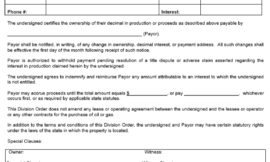In this episode, we talk about the basic steps involved with performing your own mineral rights title search and when you should consider seeking professional help from an attorney or landman.
If this has been helpful, please take a moment and leave us an honest rating & review on Apple Podcasts. This feedback really helps keep us going and helps make sure that we are putting out content that is tailored to your needs.
Key Points:
How to Perform a Title Search
Where to Start:
- Your property deed
- If you inherited minerals – Estate documents from relatives. Look for a deed (may say mineral deed, quitclaim deed, warranty deed, etc.). The description will show what type of deed it is but you should read document as the wording will dictate the type of deed.
What are the Key Parts of a Deed?
- Grantor – seller or person granting the property
- Grantee – buyer or person receiving the property, usually includes an address
- Description of what is being conveyed, if anything is being reserved by the Grantor (e.g. mineral rights).
- Legal description – section, township, and range for location that follows Public Land Survey System (PLSS). Texas is a bit different and you can find out more about Legal Descriptions and different survey systems in my blog post here.
How do you Run Title?
- Look at the last conveyance document and identify the grantor, then you need to search for the transaction where they received the property. On that conveyance document or deed, need to look at THAT grantor, look at details of what is being conveyed or retained, make note of this.
- Then search for the previous grantor. Look at that deed, and keep searching up the “chain” of title and make note of where mineral rights were transferred.
- Record each transaction in a document called a runsheet. To help you get started with your mineral rights title search, here is a free Runsheet Template. A runsheet includes key information like: document type, reception #, book/page, effective date, record date, grantor, grantee, legal description, and any comments. Keep searching back through recorded documents to patent until you have a complete picture from when the US government first granted minerals to individual all the way to present day. Can be very time consuming and complicated if minerals were sub-divided many times (granting a fraction vs. 100%).
Types of Instruments to Look For
- Deeds (personal representative’s deed, quitclaim, warranty deed, special warranty deed, mineral deed, royalty deed).
- Wills, affidavit of heirship, etc.
- Leases (lease, memorandum of lease, releases)
- Lease assignments
- Production Payments
- Pooling agreements
- Deed of trust (e.g. minerals as collateral)
Special Cases:
- Royalty Deeds – May be used to carve out something like a non-participating royalty interest.
- If there are any gaps in the chain of title, you will need to make note of these on the runsheet. Sometimes this may happen if someone dies and their estate does not go through probate. If there are not any deeds to transfer ownership of minerals to heirs, the mineral interest may still be in the name of the deceased. You may need to go through ancillary probate in the county where the minerals are owned.
Where do you Find Copies of Deeds and How do You Search For Them?
- You can do this in person by going to the courthouse / county clerk and recorder’s office. Once there, you will need to look at the indices to locate documents of interest (e.g. by the legal description or by grantor/grantee name).
- Many county records can be searched online now. If so, you can search online yourself. Some are free, some charge you for a subscription or cost per page to view and/or download copies of documents. Many sites allow you to search by reception #, book/page, grantor/grantee name, legal description, document type, etc.
- Some abstract companies have digitized documents prior to where county online records stop. They may allow you to retrieve documents on per doc basis for a small fee.
- If you don’t live near that county, you can hire a local landman or title company to perform the title search for you. This is typically the most expensive option but often the best way to ensure that nothing gets missed. They will typically provide a full runsheet and copies of all instruments relevant for your tract. You can ask for a complete or limited title search just for your parcel, and the cost and time required may vary depending on the complexity.
- There are also hybrid approaches where you can do some of the title search on your own and then get a landman or attorney to help fill in the gaps or to make sure it is correct. This might save you some money if you do it right (or it could cost more if you don’t know what you are doing).
- There are also some websites that digitize records from hundreds of counties across the country and make it available for a fee. May be useful if the county in question does not have search capability via their website. You can subscribe to these services to perform an online title search if county records
Resources Mentioned in this Episode:
Thanks for Listening!
To share your thoughts:
- Leave a comment or question in the comment box below (we read each one, and your question may be featured in a future episode)!
- Ask a question or leave us feedback via email to feedback@mineralrightspodcast.com.
To help out the show:
- Subscribe and leave an honest review on Apple Podcasts or wherever you get your podcasts – we read each one and greatly appreciate it. Plus, you can get a shout-out in a future episode!
Thanks again to Justin Williams for joining me this week and providing the mineral owner’s perspective. Until next time!




